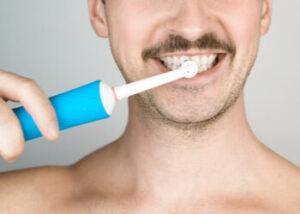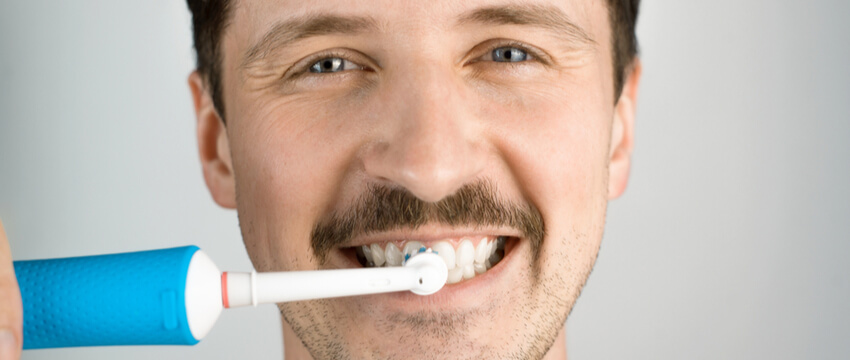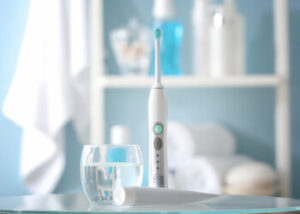Cleaning your toothbrush is as important as cleaning your teeth. If you think about it, you use your toothbrush to remove bacteria from your mouth, and when you do that, you transfer it onto the toothbrush. Cleaning it properly keeps it in good condition for longer and ensures it does a better job at maintaining oral hygiene. We’ve put some tips together to help you learn how to clean an electric toothbrush.
The Importance Of Cleaning Your Electric Toothbrush Regularly
Rinsing your toothbrush before and after each use will remove any residual toothpaste from the head, but what about the germs that you can’t see? Bacteria are microscopic and your mouth is full of it and, of course, when you remove it from your teeth, tongue and gums, you also need to clean it from your toothbrush head.
How To Clean Your Electric Toothbrush: General Maintenance Tips For Day-To-Day Use
Rinse it before and after each use. A high quality brand will be water resistant, so you shouldn’t have to worry about getting it wet.
A good rinse should get rid of most of the visible debris after brushing.
If you see dried toothpaste on your toothbrush you can rinse it under hot water to soften and remove it. Run the hot water tap until you can see steam and then hold the brush head under the water stream.
Use the correct amount of pressure when you brush. Brushing too hard can cause damage to your gums and will wear your toothbrush bristles down much faster. Worn bristles are also less effective at keeping your teeth clean and need to be replaced more often.
How To Clean Your Electric Toothbrush Weekly
- Soaking your electric toothbrush in antibacterial mouthwash once a week can give it a deep clean. First rinse the toothbrush under water to ensure that there is no toothpaste on it.
- Pour a small glass of mouthwash and leave the toothbrush to soak for 2 minutes. Rinse the toothbrush well after soaking.
- You can clean the base of your toothbrush using a soft cloth and a mild detergent to remove any visible dirt or debris. Sometimes it is necessary to use a cotton bud to clean the hard to reach areas of electric toothbrushes.
- Soak Your Toothbrush In A Denture Cleaner. Denture cleaner is antimicrobial and antibiotic and does a good job at disinfecting a toothbrush. Pour a small glass of denture cleaner into a glass, but make sure it is a clean solution that hasn’t been used on dentures. Usually half a denture tablet is enough to dissolve with a glass of water. Let your toothbrush soak in it for 2 minutes. Make sure you rinse it well afterwards.
- A solution of half white vinegar and half water makes an effective mild cleanser that has antibacterial properties. It can be used on the head and body of the toothbrush.
Storage Tips For A Cleaner Toothbrush
Make sure your toothbrush is stored upright and in a well ventilated area (away from the toilet) after each use.
Make sure your toothbrush is completely dry if you want to cover it up. If it is still wet, you are creating a breeding ground for bacteria.
You can also store your electric toothbrush head in a solution of hydrogen peroxide and water to prevent bacteria from growing on it. If you decide to do this, you must change the hydrogen peroxide solution on a daily basis.
If you share a bathroom with other people, even with family members, it’s important to note that each electric toothbrush should be kept in separate storage containers to avoid the transfer of bacteria between them. Make sure that toothbrushes are kept at least a few inches apart from each other.
Store your electric toothbrushes as far away from the toilet as possible, preferably in a closed medicine cabinet to prevent contamination. Whenever you flush the toilet it releases faecal matter or what is referred to as “toilet plume” into the air.
Don’t forget to clean the brush holder. It is very easy for bacteria to be transferred from your electric toothbrushes to storage containers and covers so make sure you clean those every two weeks too. A hydrogen peroxide and water solution is effective at keeping them clean and free of bacteria.
Consider Using A Toothpaste Dispenser
Making use of a toothpaste dispenser is an effective way to ensure that you do not transfer bacteria from your toothbrush onto the toothpaste tube.
How Do You Know When It’s Time To Change Your Electric Toothbrush Head?

Toothbrushes (and the head of the electric ones) should be replaced every three to four months or when the bristles look worn out. If you are replacing yours more often it could be an indication that you are brushing too hard.
You should also change your electric toothbrush head when someone in your household has been sick with an infectious disease.
If you have let someone else use your electric toothbrush, even if it was just once, you will need to replace the head because you won’t be able to disinfect it properly.
Use A UV Sanitiser For Electric Toothbrush Cleaning
Some electric toothbrushes are sold with UV sanitisers that take care of cleaning for you. While UV sanitisers are quite expensive, they do an effective job of removing bacteria.
Keeping your toothbrush clean contributes to your overall oral health, and can prevent the transfer of bacteria. For help with how to clean an electric toothbrush or to find out more about improving your oral hygiene, please visit our clinic in Castle Hill or contact us for an appointment: (02) 8806 3799.
References
How to clean a toothbrush
https://www.healthline.com/health/dental-and-oral-health/how-to-clean-toothbrush#electric-toothbrush-head










